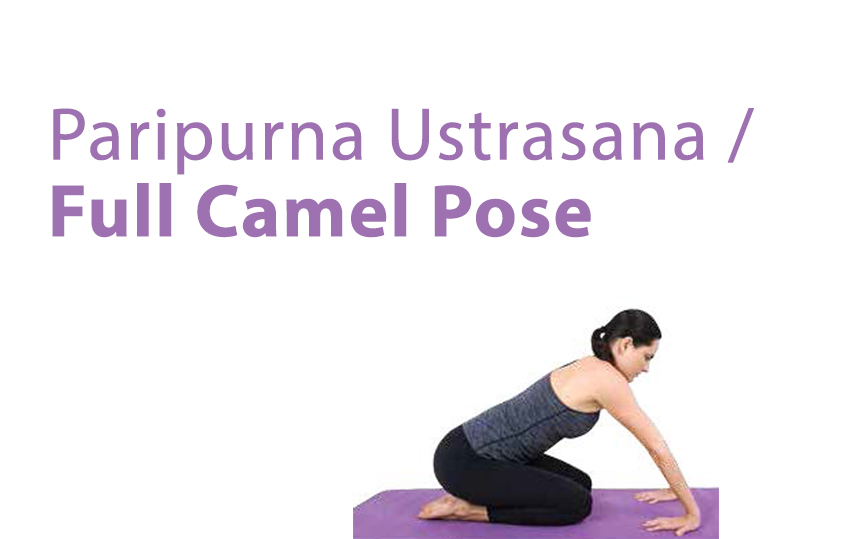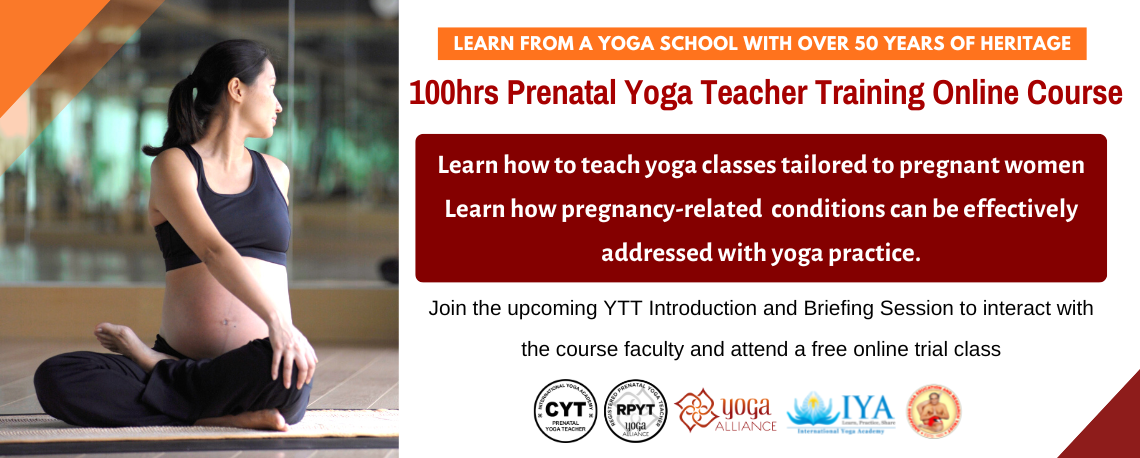By Louise Vas, with the guidance of Yogananth Andiappan
Poses demonstrated by Kerry Cestar
In this month’s featured pose, we go deeper and find freedom in the spine with Paripurna Ustrasana. We always hear that “A healthy spine equals a healthy life”. To have a healthy spine means it is both flexible and strong, and this asana practice is an ideal example of a flexible and strong spine.

Warm-up
Wrist Stretch

1. Come down to the floor on the hand and knees, similar to tabletop pose.
2. Rotate the wrists outwards so that the fingers are pointing towards the knees. Maintain both arms straight.
3. Inhale and on exhale, bring the hips back and sit on the heels. Feel the stretch on the wrists and hold for a few breaths.
4. Repeat several times by moving in and out of the pose together with the breath.
Benefit: Extends the muscles of the wrist and improves wrist movement.
Anjaneyasana / Low Lunge

1. Come down to the knees and place the hands on the floor in front of the knees.
2. Stretch the left leg back, rest the left knee on the floor and keep the toes pointing back. Come up to a lunge position and slide the right foot forward, the ankle in line or forward of the knee.
3. Keep the hands on the waist with the thumbs gently pressing on the lower back. Inhale to lengthen the spine and on exhale, lower the hips. The stretch will be felt on the front of the left hip. Keep the chest lifted and let the back arch to activate the back muscles.
4. Release the pose by bringing the hands to the floor and repeat on the opposite side.
Benefit: Stretches the hip flexors, groin and the leg muscles.
Quadriceps Stretches/ Low Lunge Variation

1. Lie down on the floor, bend the knees and keep the feet slightly wider than hipwidth. Arms are beside the body.
2. Inhale and on exhale, press the arms on the floor and lift the hips.
3. Bring the hands under the hips and keep the elbows on the floor. Slightly move from left to right to slide the elbows in, allowing the chest to widen and the back to arch.
4. Keep the head in the centre. Hold for a few breaths then release by sliding the arms out and bringing the hips back to the floor.
Pigeon Pose

1. From the lunge position with the right leg forward and hands on the floor, move into Pigeon Pose by dropping the right knee sideways, and hips to the floor.
2. The left leg is extended back, straight from the hip. Keep the hips down and the body weight in the centre.
3. Bend the left knee and rotate the left shoulder outwards and hold the foot with the left hand. Keep the gaze forward, torso facing forward and extended.
4. Inhale and on exhale, bring the left heel closer to the right hip. Hold for a few breaths, release and repeat the same on the other side.
Benefit: Stretches the hip flexors, groin and the leg muscles.
Supta Virasana / Supine hero pose variation (with the use of blocks)

1. Prepare two blocks on the floor – place a block horizontally on top of a flat block.
2. From lying down, bend the knees and keep the feet slightly wider than hip-width. Arms are beside the body with the palms pressing down on the floor.
3. Inhale and on exhale, lift the hips off the floor and slide the blocks underneath the body. Let the sacrum rest on the blocks to support the body weight. Extend the neck and keep the head in the center, and breathe lightly.
4. Hold the ankles and slowly slide the feet in, closer to the body – toes are pointing towards the shoulders. Keep the lower back and back of the head on the floor to extend the spine.
5. Bring the hands back to the sides of the body. Stay in this pose for a few subtle breaths. Release the pose by sliding the legs out, lifting the hips and sliding the blocks out and away from the body.
Benefit: Stretches the quadriceps and the abdomen.
Eligibility Pose
Ustrasana / Camel pose variation

Stand on the knees; place the left hand on the lower back and raise the right arm. Inhale and on exhale, turn the body to the right and hold the right ankle. Slowly push the hips forward, lift the chest and the chin with the torso facing upwards. When stable, release the left hand from the back and sweep it across the chest and above the head, rotating the shoulder outwards as you move. Reach for the left ankle and focus on lifting the chest out and drawing the shoulders away from the ears. Breathe lightly in this pose. To come out, release one hand and turn the torso to the opposite side.
Supta Vajrasana / Supine Diamond Pose

From sitting on the heels in Vajrasana, bring the elbows down to the floor and lie down. Aim to have the middle and upper back resting on the floor. The thighs are active in staying close to the floor. Stay in this position for a few light breaths. When comfortable in this pose, hold the opposite elbow and raise the arms above the head. Keep the lower back and neck on the floor to extend the spine.
Steps

1. Start in Vajrasana/Diamond Pose, with the knees separated. Steps

2. Lean back and slowly lie down on the floor. Keep the elbows by the sides of the body. Inhale and on exhale, push the elbows down, lift the chest to arch the back and bring the top of the head to the floor.

3. Bring the arms above the head and keep the palms flat, fingers pointing towards the shoulder. Squeeze the elbows closer.

4. Inhale and on exhale, push the hands against the floor and raise the head and shoulders.
Final Pose

Walk the hands closer to the feet to deepen the arch, and lower the elbows to the floor one by one, aiming to hold the toes.
Modification

For those with limited external shoulder rotation, below is a modification of Paripurna Ustrasana. Instead of bringing the elbows to the floor, stay with the hands flat and focus on lifting the chest, straightening the arms as much as possible.
Neutralizing MOVEMENTS
Neutralizing poses are important for long-term injury prevention; it allows the body to return to its neutral position. Be aware of pressure alert points and listen to your body – do neutralizing movements after slowly coming out of the pose.
As this is a deep backward bending pose, some compression in the back is created.
Kneeling Twist variation / “Thread-theneedle”

Come down to the floor on the hands and knees. Separate the knees and bring the feet together. Slide the left arm under the right and aim to bring the left shoulder and the left side of the head to the floor, ideally in line with the right knee. With the left arm pressing against the floor, extend the right arm upwards, and then back. Keep the chest open and not caving in. Hold the twist with a few light breaths. Come out of the pose by pressing the free hand to the floor and pushing the body back up.Repeat on the other side.
Supta Jathara Parivartanasana / Supine Spinal twist

Lie down and extend the arms to the sides, straight from the shoulders. Bend the knees and wrap the right leg on the left, like in Garudasana/Eagle pose. Inhale an on exhale, bring the knees to the floor on the left side. Look towards the right side and aim to keep the knees and right shoulder on the floor. Slowly bring the knees back to the centre, and down to the right side. Look to the left and keep the left shoulder on the floor.
Counter pose
The below counter poses will relieve any tension created in the torso and hip area.
Balasana / Child’s Pose

From Vajrasana, separate the knees and bring the body into a forward bend, extending the arms in front. As gravity works, let the chest and forehead or chin rest on the floor and the whole body relaxing into the pose. Stay for few breaths and release the pose.
Pavanamuktasana / Wind-relieving pose

Lie down, start with the back flat and bend the knees. Inhale an on exhale, roll the hips up and bring the knees closer to the chest. Hug the legs by the shins and maintain the back of the head on the floor. To bring a light massage to the lower back, gently roll from left to right.
As yoga practitioners continue in a regular and dedicated practice, advanced poses such as Paripurna Ustrasana bring about better self-esteem and a higher level of trust and faith in one’s self and in the practice. Physically, we go to extremes that at the beginning we thought impossible, but because of humility and grace, we become open to new levels of consciousness and physical abilities. While in this pose, there is always a struggle between going deeper or coming out of the pose. Give it a few breaths – as the chest is open in this pose, let go of negative thoughts and receive the energy as it reaches the heart. Let the thoughts about the struggle pass and surrender the mind into what the heart and body want to do. Practice with an experienced teacher who can guide you into a rewarding and energy-boosting backward bending practice. As the upper body and head go into an inversion, poses like Parirpurna Ustrasana can refresh the mind and body, sending much needed energy or prana to the brain.


















 Other
Other